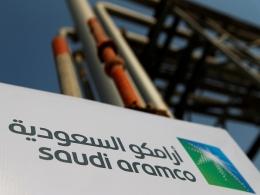Vinay Prakash Goel, chief executive officer-mining and trading, has spent around 15 years at Adani Enterprises Ltd, India’s largest coal importer. A veteran at billionaire-entrepreneur Gautam Adani-owned business, Goel has seen the firm emerge as the second-largest global buyer of thermal coal with around 65 million tonne of imports every year. Goel has a graduate degree in mechanical engineering and a management degree in finance. In an interview, he spoke about the global rout in the resources sector including coal, terming it the worst cycle yet. He also spoke about falling coal demand in China and India on one hand, and on the other pick-up in demand from South Korea, Thailand and Vietnam. Edited excerpts:
Natural resource prices have fallen. What does that mean for India and how will that pan out for related sectors?
As far as India is concerned, coal mining activity—captive and of Coal India Ltd—is actually growing compared with what was happening 5-10 years back. There is definitely a radical change. It was growing at 2-3% then, but now it is growing at 8-9%. Now, the issue we are facing is that there is a lack of demand for coal as the demand for power has fallen. One of the reasons can be poor financial health of electricity distribution companies. Poor demand for power is actually leading to surplus availability of coal. Coal India is doing well in terms of 8-9% growth, but now they are going to be in a situation when they are not going to have takers. It has to rethink in terms of planning for the future and the ministry of power has to come out with a plan to spur demand for power.
The government has already come out with Ujwal Discom Assurance Yojna, or UDAY, to help stressed state electricity distribution companies.
UDAY is a good scheme, but the impact of UDAY will come after some time. You can’t have an impact in six months or one year; it will come after two-three years. These kind of initiatives have long gestation period. It is good to start; people are actually accepting it. Most of the state electricity boards have taken it up.
Have you seen such a downward cycle in the natural resources space?
Yes, but not this bad and not for this long a period. Since 2001, I have never seen such a big drop. There was a drop in 2008-09, but then it went up. However, now it is getting stabilized at this number. For the last one year, we are not seeing pick-up in demand. It will take another 2-3 years when the markets will stabilize.
How do low prices impact markets in Asia, and your business?
Seaborne trade, which was growing at 3% for the last 5-6 years, is now likely to grow at 0.8-0.9%, according to our internal assessment. This will be because of a drop in demand from India and China. China’s demand of 200 million tonne (of thermal coal) is now likely to be 100 million tonne. Indian demand should come down by 8-10% to 135 million in another 2-3 years. This financial year, it should be 162-163 million tonne, and for 2016-17 we are estimating it to be 148 million tonne. But this drop in India and China is actually getting covered by countries such as (South) Korea, Thailand, and Vietnam which are growing at a very fast pace. Their demand of coal is actually going up. So, if seaborne trade is at least 800 million tonne globally, it is actually getting stabilized at that number.
Given the rout in coal prices, what is your acquisition strategy?
We have one mine in Indonesia and another in Australia. According to a McKinsey report, we have the cheapest resource available with us in Indonesia, which is the best mine in terms of value.
Whether it is a right time for acquisition or will it be 6 months or one year from now, that is not known. We constantly discuss acquisition opportunities with investment bankers and mine owners. But now even investment bankers are finding it difficult to get buyers.
Given the pessimism in the coal markets, which geographies do you expect to grow?
We foresee Australia growing from the current level of 200 million tonne going up to 280-290 million or even crossing 300 million tonne and becoming the largest exporter of thermal coal by 2020. It will replace Indonesia for sure in another three years to become the largest exporter of coal. It has better quality of coal.
What is your game plan in Australia?
We have invested in Australia as bulk supply can be done only from Australia in a cost-effective manner. It is always going to be a continent of opportunities. As of now, the mine which we have is still a big opportunity. Once that comes on board, we will see.
What about South Africa?
South Africa will always have a limited capacity because the issue there is of capacity constraint at the port, and not mining. The port is not going to have a capacity of more than 92 million tonne of export. So they are losing because of their limited capacity. That’s why we have not shown any growth in South Africa.






